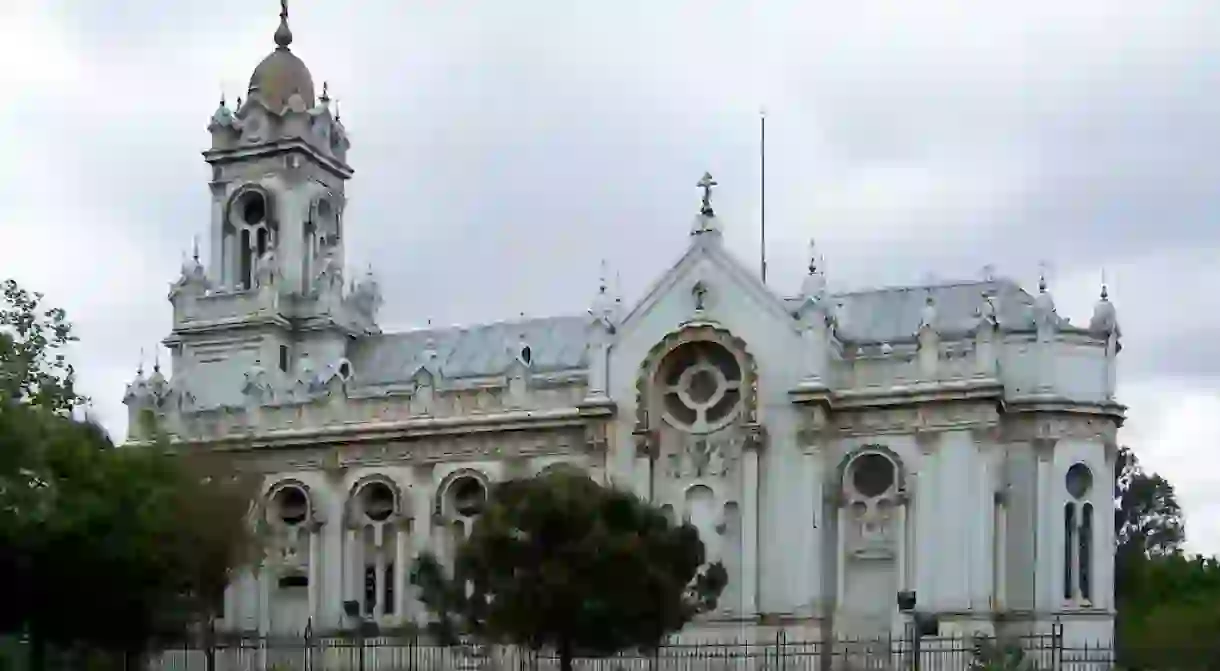Discover Istanbul’s Hidden Churches

The architectural remains of Istanbul’s ethnic and religious minorities, which date back to the Ottoman Empire, continue to stand in the city’s hidden corners. Even though the city has become more homogenized, the Greek Orthodox, Jewish, and Armenian religious edifices stand as a reminder of a more multi-cultural past. We took a look at some of our favorites.
Crimean Memorial Church
Church, Memorial

Located at the end of Serdar-ı Ekrem Street in Galata, the Crimean Memorial Church is almost entirely hidden away by the lush trees that stand in its forefront. Also known as Christ Church and belonging to the Church of England, the religious edifice was constructed between 1858 and 1868 in memory of the British soldiers who participated in the Crimean War. Due to a lack of congregation the church closed in 1978 but reopened in 1991. Make sure to wander around the small garden where geese, turtles, and a few stray cats enjoy the deciduous surroundings.
Surp Krikor Lusavorich Church
Church, School

One of the most important and oldest sites associated with the Armenian community, the Surp Krikor Lusavorich Church was built in 1360. Having been subject to two fires, the church was renovated and reopened twice, in 1733 and 1799 respectively. Next to the church, the Getronagan is an Armenian minority high school, which opened its doors in 1886 with the sponsorship of the Archbishop Nerses Varjabetyan. The school continues to operate today, teaching mostly in Turkish but with Armenian language and literature courses available.
Church of St. Mary of the Mongols
Church, Mosque

Known for its rose-colored exterior, the Church of St. Mary of the Mongols was established in 1282 by Princess Maria Palaiologina, the illegitimate daughter of Byzantine Emperor Michael VIII Palaiologos. After having lost her husband Hulagu Khan, the grandson of Genghis Khan, Maria returned to Constantinople and became a nun in her namesake church. One of the only Byzantine churches to have not been converted into a mosque, the Ottoman Royal decree that granted the structure to the Orthodox Church can still be found framed and hanging inside.
Aya Yorgi Monastery
Church, Monastery

Located at the very top point of Büyükada (the largest of the Princes’ Islands), Aya Yorgi (St. George) was built around 1751 and remains one of the most visited sights on the island overlooking a spectacular view. Every year on April 23rd, thousands of pilgrims from all faiths make the journey to the monastery following an age-old fertility ritual. These visitors, who come from Turkey, Greece, the Balkans and Russia, unwind spools of thread from the Birlik Meydanı (union square) to the church at the summit, winding it around the greenery along the way.
Bulgarian St. Stephen Church
Church
The Bulgarian St. Stephen Church is a Bulgarian Orthodox Church, which is famous because of its cast iron exterior. Also known as the Bulgarian Iron Church, the religious structure belongs to the Bulgarian minority who were allowed to built a national church in the 19th century. Richly ornamented and composed of three domes that form a cross-shaped basilica, the altar faces the Golden Horn.













